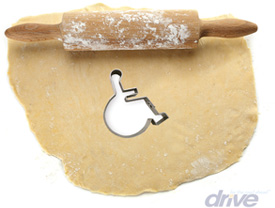increase client satisfaction and maximize referrals ON POWER MOBILITY DEVICES
REQUEST A
CONSULTATION
Say Goodbye to the "Cookie Cutter" Approach
if it’s covered, why not give them the most chair possible? When you look at the numbers, it’s no wonder this became a standard practice—ten years ago the Medicare’s reimbursement rate on a K0823 (K0011) chair was nearly $5300! But with today’s Medicare policy changes, that strategy is no longer viable. Denials for K0823 chairs have skyrocketed. One recent quarterly review of claims turned up an 80% denial rate for K0823 chairs. At the same time, even when claims are approved, reimbursements have gone through the floor. The average 2013 Round 2 reimbursement amount for a K0823 chair is less than $1900.
One large national provider of power wheelchairs has already paid the price for relying too heavily on the K0823 code. After years of business as usual, they began to face increased audits, yet they didn’t change their practice. Eventually, the audits and denials caught up to them and they were forced to claim bankruptcy, putting the entire business at risk. But with a little flexibility, other PMD distributors don’t have to face the same fate. The challenge now is to think strategically about each client, providing the right device for maximum reimbursement. It sounds simple, but where do you begin?
Begin with the client
There’s a reason there are so many different PMDs on the market—because there are so many different kinds of clients. A quick review of some case studies makes this point extremely clear. A 170-pound elderly women who gets around just fine on her own upon waking but starts losing balance and functional ability by mid-afternoon has vastly different product requirements than a 315-pound oxygen-dependent man with COPD. Matching the product and reimbursement code to each of these clients is the key to success—for both the client and the provider.
The first step is to assess the client’s lifestyle and their Mobility-Related Activity to Daily Living (MRADL) needs, taking into account documentation from the healthcare provider. This assessment will lead you to the right product as well as the maximum possible reimbursement for that particular client.
In the case of the elderly woman who loses her ability to ambulate as the day progresses, an MRADL and lifestyle assessment determined that she would be best served by a K0800 scooter, which carries an average Round 2 reimbursement of $839. This is clearly lower than the reimbursement on a K0823 chair, but in today’s new reality, she would more than likely be denied for that higher-level chair.
An assessment of the oxygen-dependent, obese COPD client clearly shows the need for more capability. His needs can be met by a K0801 scooter, which can handle the extra weight and more-frequent usage, and carries an average Round 2 reimbursement of $1579.
Client success = provider success
Approaching the business from this client-centered point of view benefits everyone involved—the client, the provider, and the physician. The client’s physical needs are met, the provider experiences fewer denials and higher reimbursement levels, and the physician feels comfortable continuing to recommend your services to clients because they’ve seen positive outcomes.
Matching the product to the client can help boost your profits in other ways, too. Once the question of the main reimbursement is off the table, clients can feel more secure about purchasing accessories such as extra batteries, oxygen holders, elevating leg rests, and more. Many of these items can be reimbursed through Medicare, and even those that are cash sales feel more attainable to the client once payment for the PMD itself has been taken care of.
Change can be daunting, especially when it’s being forced by regulatory decisions that are out of your control. But once you adopt this client-centered approach, you should find it to be a truly positive change. In the end, we’re all in the business of helping clients, and using your expertise to meet both their physical and financial needs is truly fulfilling your mission.
Distributors of power mobility devices (PMDs) face very real problems in 2014. Today’s regulatory climate is tighter than ever, with more requirements on prescribing physicians, lower Medicare reimbursements, and a higher incidence of audits and denials than we’ve ever seen before.

At this rate, providers who cannot adapt their business practices to the changing times are going to find themselves in major financial trouble.
One pitfall is the use of a "cookie cutter" approach to PMD delivery. For years, many in the industry have chosen to recommend to clients with a wide variety of mobility issues an ultra-reliable, ultra-durable Group 2 K0823 power chair. For some clients it was certainly more than they needed, but the inclination was that

